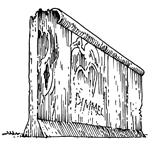“I’ll show this punk,” Billy Joel thought to himself. Each American generation thinks theirs is the most exceptional, and the twenty-something talking to Joel was no different. The kid lamented the troubles of his day—AIDS, crack, “the world situation.” At least Joel had grown up in the 1950s and 1960s, the kid observed, and nothing had happened. The Piano Man was not amused: “I got my back up. I said, ‘Did you ever hear of Korea, or Hungarian freedom fighters and the Suez Canal?’ I started writing down sound bites from my own life in what started out being a rap song.” The kid had probably never even heard of John Dos Passos.
In musical terms, “We Didn’t Start the Fire” is objectively terrible. The song begins with great self-importance, with the fake applause of one million public school history teachers; prattling, trash-can percussion is met by Joel’s didactic synth line; the whole warm-up is leveled by a mighty kick of guitars and slap bass. The scrum surges forward to meet each of Joel’s verses, which crescendo from flat, free-association re-portage (“Little Rock, Pasternak, Mickey Mantle, Kerouac”) to vein-in-my-forehead social rupture (“JFK! Blown away! What else do I have to say?!!”), before all returns to normalcy.
The song’s ebb and flow imposes an illusion of cycles on the fickle, irrational scatter of history. “Belgians in the Congo!” might be a reason to shout, but a chorus arrives to remind us of the big picture, and things lapse back to the trivia of daily life: “Hemingway, Eichmann, Stranger in a Strange Land…” The song was timed perfectly, arriving in the fall of 1989. “Right now we are looking at what could be the beginning of the end of the Cold War,” Joel observed. “I wanted to comment on it because I’m a little surprised at how blasé people seem to be about it. When I was a kid we all thought we could all be blown to smithereens at any minute.”
THE FINAL COUNTDOWN
As forecasted by Billy Joel, the beginning of the end was upon us. But the collapse of East and West into just plain Germany was still hard to fathom for someone born in the late 1970s. By 1989, the Berlin Wall seemed like a quaint defense against a world in motion. What use were bricks and mortar when it was ideas and hopes that were being trafficked?
Someone had brought a bagful of Berlin Wall filings back to the United States and encased each of them in a cube of Lucite. One of these cubes of historical debris found its way to Miller Jr. High in San Jose, California, where it sat outside...
You have reached your article limit
Sign up for a digital subscription and continue reading all new issues, plus our entire archives, for just $1.50/month.
Already a subscriber? Sign in





